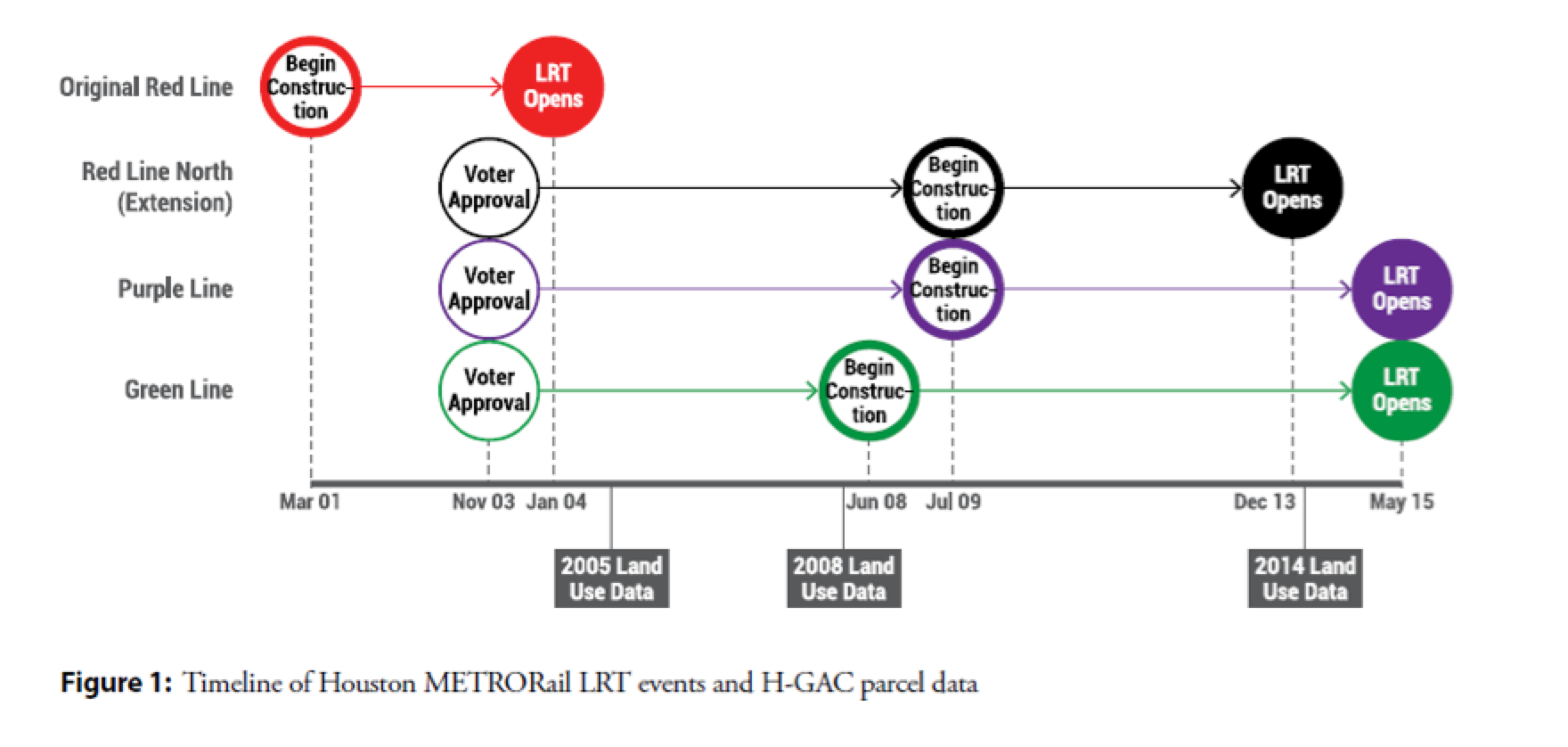People often get excited when it’s announced that light rail is coming to their neighborhood. There is an assumption, mostly supported by the research depending on how far from the rail the research explores, that it can attract more businesses and encourage development of more housing units, while at the same time increasing property values. Overall, a strong and connected public transportation encourages cities to build inward instead of outward by increasing the ability for nearby residents to carry out activities. For example, the City of El Paso is designating some areas as Transit-Oriented Development (TOD) zones in anticipation of their Streetcar Project. This move provides incentives for businesses to come and make neighborhoods near transit a vibrant one, where people are able to go to important places like jobs, grocery stores, schools, parks and other public amenities within close distance to each other.
In Houston, the spread of light rail was a long and sometimes contentious project. There were doubts about its benefits to surrounding communities. But a study by Qisheng Pan, a professor at Texas Southern University, seems to indicate there have been measurable positive impacts from the development of light rail, at least on the Main Street corridor, in Houston. That study found that within three miles of new rail stations, some of those benefits ascribed to light rail did in fact materialize. But being close to rail stations was not the only factor. Physical characteristics of neighborhoods such as the concentration of people and jobs and home size also positively impact property values while older buildings tend to be negatively impacted.
Likewise, another study by Richard J. Lee from the Washington State Department of Transportation and Ipek N. Sener from the Texas A&M Transportation Institute, examined changing land use within approximately half-mile of the rail stations along the original red, purple and green line in Houston (see picture below). That study found that along the original red line, there was a rise in commercial development that happened after the light rail came in but that began even before the red line was constructed. The study also found, increased development on vacant lands along these rail lines. This is a good thing as vacant land in cities like Houston tends to represent a lack of investment. Even as the Houston region continued to face a shortage of affordable housing supply, residential units along these rail lines increased – a trend across the country as living close to transit becomes a more attractive option.

The authors also look into land-use mix, which is an indicator of the different ways people are using a land or building. The more people can live, work, and carry out important activities within close distance to each other, the more vibrant a neighborhood can be. All of the light rail lines evaluated seemed to have a more diverse land-use mix compared to other parts of Houston. Of course, it’s hard to determine whether the mix of activities along these lines was caused by the increased access by light rail transit. Sometimes, decisions on where to put new rail lines or extend them depend on locations with existing high concentrations and a diverse mixture of activities happening there.
But what look like benefits to some – notably rising property values – can also represent risks for longtime homeowners and renters. Indeed, light rail is not always welcomed in some neighborhoods. Especially those already concerned about gentrification that tends to drive up property taxes and rents, making housing unaffordable for existing residents.
To address these concerns, some cities have put in place measures to avoid displacing existing residents. Houston continues to grow but is at a crossroads post-Harvey. Can it afford to continue growing as before and face the long-term consequences of being a car-dependent, outward growing metropolis? Or must it begin to think about prioritizing growing inward by improving its public transportation infrastructure and putting work places and other important destinations close to where people live while ensuring residents who want to stay can do so?
Dian Nostikasari is a Research Fellow for the Development‚ Transportation‚ and Placemaking program at the Kinder Institute for Urban Research.

